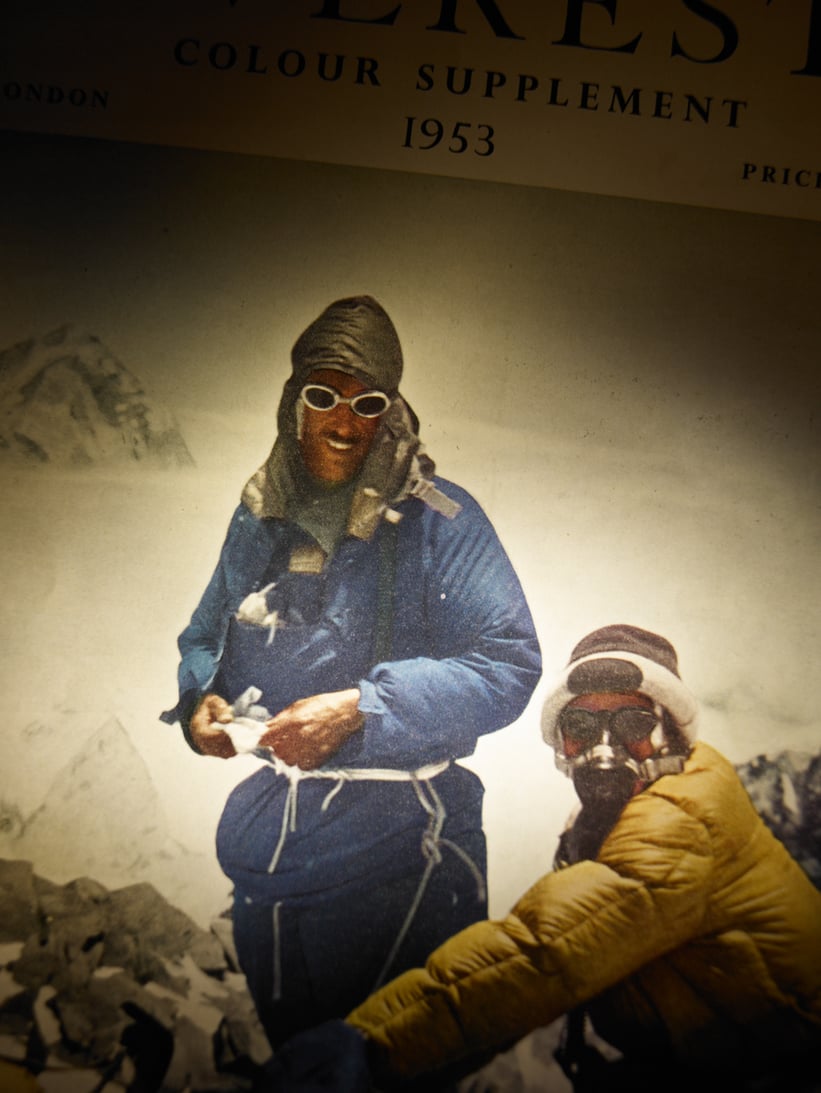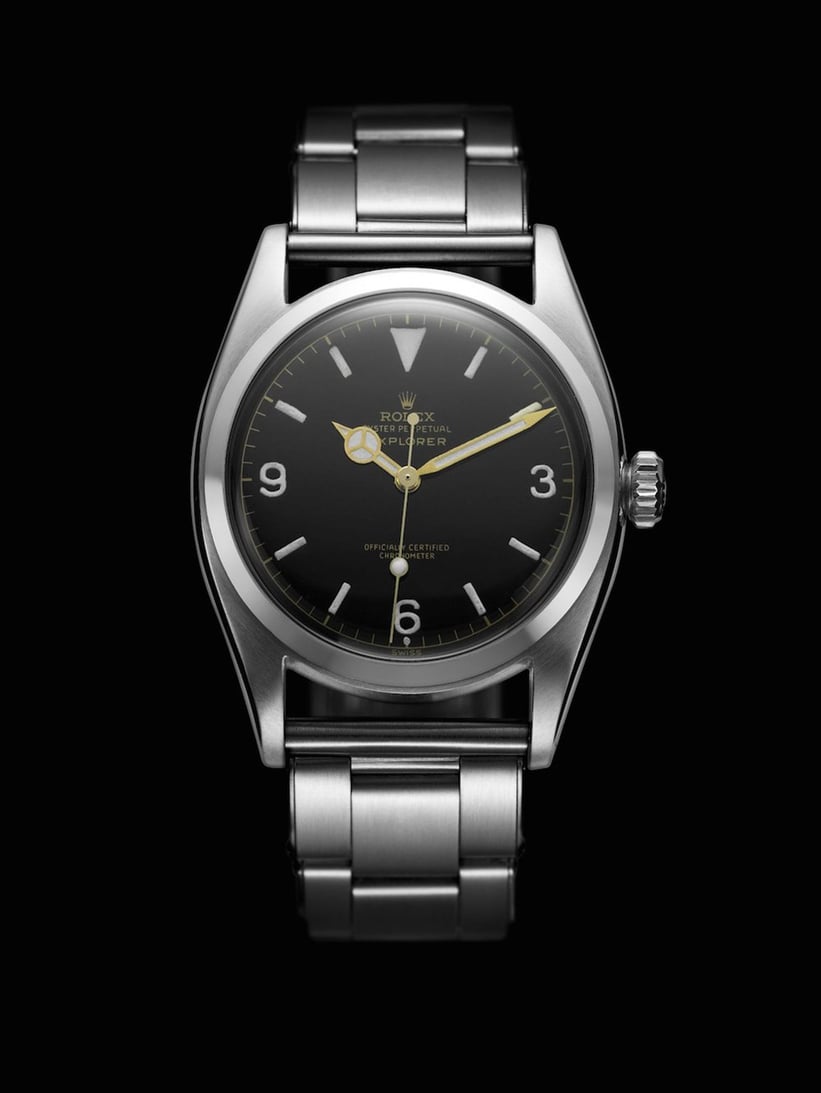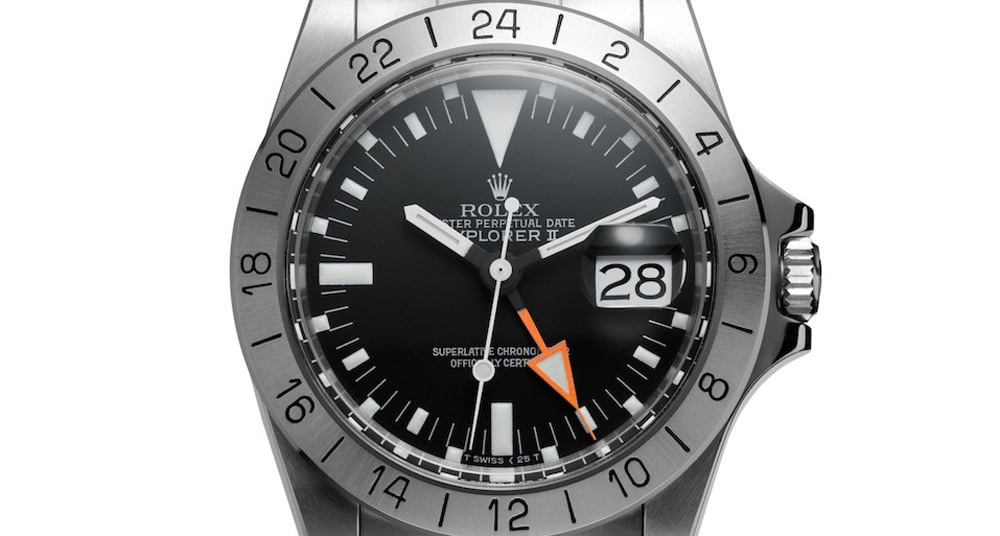
Sure, a Rolex is a fine thing to own, but there was a time when the reliable Oyster Perpetual presided over life or death – when Sir Edmund Hillary and Tenzing Norgay became the first people to ascend Mount Everest in 1953, for example…
To adventurers and enthusiasts of extreme sports, Rolex’s rugged watches have always been attractive. In 1927, British swimmer Mercedes Gleitze crossed the British Channel wearing the revolutionary Rolex Oyster timepiece on her wrist, which was as watertight as its namesake’s shell. And it wasn’t only in the water that the Oyster could be seen, but also on other feats of endurance or exploration on dry land and in the air. The ‘Speed King’ Malcolm Campbell wore a Rolex during his speed record attempts in Bluebird, as did the first pilots ever to fly to the top of Mount Everest. Even after the Second World War, Rolexes were more than ‘just’ timepieces, and especially popular with deep-sea divers, pilots and mountain-climbers.
Born at icy heights


At a camp at the foot of Mount Everest in May 1953, the participants of the ninth British expedition to the summit gathered ahead of their expedition, under the guidance of John Hunt and with support from the Royal Geographical Society. The first team of climbers was forced to retire shortly before the top, leaving New Zealander Edmund Hillary and Sherpa Tenzing Norgay to become the first people in history to reach the summit. Joining the pair at these icy heights was Hillary’s trusty Rolex Oyster Perpetual, which he used to calculate precisely the right time to depart. If he’d got this wrong, it could have been potentially deadly. Rolex would later analyse the watch in detail for research and development. As the legend goes, Hillary’s first nonchalant words to a friend after returning from the expedition were, “Well, George, we finally knocked the bastard off”.
From the Himalayas to Hollywood

The whole world celebrated the successful ascent, and the Rolex Oyster Perpetual ‘Explorer’ – released in the same year – quickly achieved cult status. Finally, every banker, lawyer or accountant could feel like Sir Edmund Hillary by wearing this watch. While Rolex expanded its range to accommodate other ‘adventurers’ with watches such as the Submariner in 1953, the Explorer was still the company’s raison d’étre.
In 1971, the watch was updated, becoming the Oyster Perpetual Explorer II. Its distinguishing feature was the large, orange 24-hour hand, which was easily visible in even the darkest of conditions – ideal for those exploring caves, or in polar areas where there is no sunlight. But it wasn’t a famous explorer that made the watch so desirable to collectors today, rather the legendary American actor and racer, Steve McQueen. Times had changed – in the 1950s and ’60s, the Rolex Explorer helped to discover the final white spots on the map (and the Moon), while in the 1970s, it instead had the heroes of Hollywood under its spell.
Photos: Rolex / ZUMA / REX / Shutterstock
The famous Rolex Oyster Perpetual that Hillary wore at the summit of Mount Everest can be seen today in the Uhrenmuseum Beyer in Zürich. Numerous classic and modern Rolex Explorers can also be found for sale in the Classic Driver Market.

Aucun commentaire:
Enregistrer un commentaire